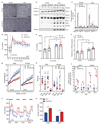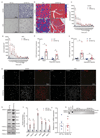AMPK activation protects against diet induced obesity through Ucp1-independent thermogenesis in subcutaneous white adipose tissue
- PMID: 30887000
- PMCID: PMC6420092
- DOI: 10.1038/s42255-019-0036-9
AMPK activation protects against diet induced obesity through Ucp1-independent thermogenesis in subcutaneous white adipose tissue
Conflict of interest statement
Competing interests The authors declare no competing interests.
Figures




References
-
- Carling D. AMPK signalling in health and disease. Curr Opin Cell Biol. 2017;45:31–37. - PubMed
-
- Steinberg GR, Kemp BE. AMPK in health and disease. Physiol Rev. 2009;89:1025–1078. - PubMed
-
- Cool B, et al. Identification and characterization of a small molecule AMPK activator that treats key components of type 2 diabetes and the metabolic syndrome. Cell Metab. 2006;3:403–416. - PubMed
Publication types
MeSH terms
Substances
Grants and funding
LinkOut - more resources
Full Text Sources
Other Literature Sources
Medical
Molecular Biology Databases

